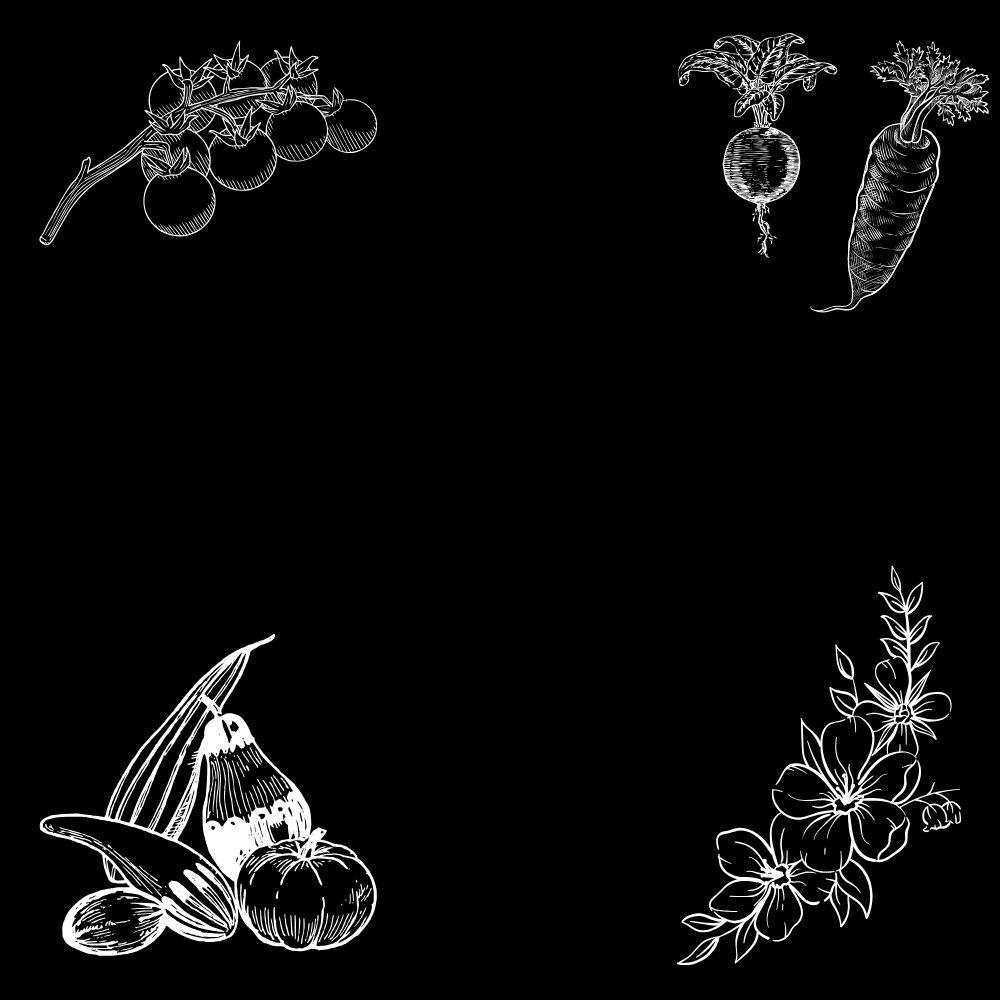
With Autumn underway, evenings are becoming earlier and days are becoming colder, however, there is still plenty to grow. Not only do you want to occupy empty soil beds, there are plenty of vegetables you can plant in November.
Most allotment growers are thinking less about what vegetables to grow in November, and more about which crops to harvest, such as winter squash and pumpkins, beetroots, and fruits like apples and pears.
What’s Possible in November - Allotment Online
November temperatures are usually between 6°C and 10°C, and with occasional showers, most allotment growers will be wrapping up their work on the plot. With nature hibernating for the winter, growers also take a hiatus. However, if you want to get a head start on next year’s growing season, you can consider some common plants to grow in November and do prep work.
November is a great time to prune established fruit trees and, if the ground isn’t too hard, plant dormant bare-root varieties. There may still be some final harvesting to do, you can gather up any vegetables that won’t cope with the colder months ahead, and continue caring for your overwintering crops. If you haven’t already, now’s also the time to think about adding fleece, cloches, or other winter protection to help extend your growing season or see certain crops through the colder weather.
Gather up fallen leaves and green debris for composting or store them for several months to create rich, homemade mulch. You can use this mulch to protect crops that benefit from weed suppression and moisture retention. It’s also a good time to stake any plants that may be vulnerable to wind damage. Don’t forget to check over brassica cages and netting too, repairing or replacing anything that’s come loose or worn out. If you haven’t already, now’s the time to clean down the greenhouse, especially if you’re overwintering plants or planning any late sowing under cover. Good ventilation is still important, but make sure any heaters or insulation systems are working properly to maintain a stable environment through the colder months.
During November you may be storing your grown vegetables, it’s important to check your stores thoroughly for any damage or rotting and remove them to prevent infections from spreading. November is a good time to plan for the season ahead, make notes of what went wrong and what went well. As a grower, if you are wondering whether all your energy will only be directed towards maintenance work around your allotment, you are wrong. If you’re wondering “what bulbs to plant in November?” or “what vegetables to grow in November?”, we’ve got the answer.
Even though the temperatures are dipping, and you may notice the occasional night frost, some hardy and overwintering crops can still be planted outdoors. This includes garlic, onions, broad beans, and peas. If you have access to polytunnels, greenhouses or cold frames, you can also plant salad leaves, winter lettuce and spinach.
November Allotment Jobs Checklist
While you prepare the allotment for winter, you also need to pay attention to protecting the existing crops that you’ve planted. Rather than simply wondering what to plant in November, here’s a complete list of activities to undertake during this month.
Here’s everything you can do during November:
Plant Overwintering Crops
In November you can sow your overwintering crops like garlic, onion and shallots. Choose the hardy variant which can withstand the cold and frost. However, it’s important to protect them with horticulture fleece or cloches, or keep them in polytunnels and a greenhouse. They will then be ready for harvesting once the weather turns warm in early spring.
You can also sow broad beans and peas, which are more tolerant of the UK winter. Rhubarb crowns are usually in season from January onwards, but you can also force the crowns during November.
Prepare the Ground for Spring
While spring is still a few months away, November can be a good month to get a head start on improving your soil health before the growing season starts next year. Also, the intervening time allows nature to work its magic and help you create a fertile, nutrient-rich soil that can support healthy produce. Add mulch and compost to the allotment, so that your ground is prepped for spring sowing. If the soil isn’t frozen yet, lightly till it and break the clumps, allowing for better drainage and aeration.
Protect Your Overwintering Crops
For overwintering crops, you can insulate the containers with horticulture fleece or keep the plants in polytunnels or a greenhouse. You should also keep an eye on predators like foxes, which may be on the lookout for food, as winter approaches. Some pests like slugs and snails can still be active during November, especially in warmer areas.
Do Maintenance Jobs on the Allotment
As you wind things down for winter, take time to check your stored seeds, harvested crops, and tools, making sure everything is dry, secure, and properly packed away. Repair any gaps in the shed to keep out rodents looking for a place to hibernate. It’s also a great time to browse seed catalogues and start planning next year’s sowing list.
November Calendar for Allotment Growers
November 1st-10th: Sow overwintering crops
November 11th-20th: Mulch soil beds and insulate the pots and containers
November 21st-30th: Prune fruit bushes and force rhubarb
What to Sow Now vs What to Plant Now in November
Are you wondering what to sow in November? Here are some seeds you can plant directly in the soil during this month, as the weather starts getting colder and frost appears:
- Broad beans
- Peas
- Salad leaves like rocket, mustard greens, mizuna
- Spinach
- Microgreens
If you live in cooler regions, use polytunnels, a greenhouse or cold frames to keep your plants growing and thriving over the winter. To grow plants indoors, use a grow light, a heated propagator or place them by a sunny window.
If temperatures are mild, you can directly plant bulbs, sets or crowns directly into the soil. Here are some of the best plants to plant in November:
- Garlic
- Onion sets
- Shallots
- Rhubarb crowns
- Bare-root fruit trees and bushes
Some plants can also be sown under cover, such as lettuce, rocket and winter salad leaves. Remember to harden off the plants before planting them in the soil. You should also protect the plants at night using horticulture fleece or cloches.
Some of the seeds you can plant under cover include:
- Winter-hardy varieties of lettuce, such as ‘Arctic King’
- Rocket
- Hardy spinach varieties such as ‘Perpetual’ or ‘Giant Winter’
- Overwintering spring onions
Wondering what to sow in November in areas experiencing milder autumn weather? In the southern or coastal parts of the UK, you can plant seeds outdoors, but must still protect them during the night or colder days with horticultural fleece.
Some of the seeds you can plant outdoors with minimal protection include:
- Autumn-sowing broad beans
- Cold-tolerant varieties of Peas like Meteor
- Hardy winter salad greens
Growing Vegetables in Containers or Small Spaces
Are you still on the waitlist for an allotment to rent? Container-growing plants allow you to continue following your passion even in November.
Here are some great plants to try this month:
- You can plant garlic in large tubs, but you must keep them in a sunny but sheltered space.
- Salad leaves can be grown in troughs, and you can protect them by placing horticultural fleece over the young plants.
- Herbs like parsley, chives and coriander can be grown by placing them on a sunny windowsill. You can plant them in shallow troughs.
Wondering what bulbs to plant in November? This is the ideal month for planting bulbs, fruit trees and bushes before the cold winter arrives. Some flower bulbs to plant in November include:
- Tulips
- Daffodils
- Crocus
- Hyacinth
Some bare-root fruit trees and bushes to plant during this month include:
- Currant
- Raspberries
- Gooseberries
- Apples
- Pears
- Plums
Precautions for Container and Indoor Growing in November
- Insulate the container with bubble wrap or fleece to keep the roots warm
- Keep the pot on a raised platform or move regularly to prevent waterlogging
- Keep an eye on the soil’s moisture content and water accordingly
- Place plants on south-facing windows to maximise the sunlight and warmth
- Check for signs of pests such as aphids and whitefly indoors
Your November Grow-Your-Own Starter Kit
As an allotment grower, make the most of November and prep your land for the warmer months. At Allotment Online, we help you plan your activities for autumn with our Grow-Your-Own-Starter Kit for November.
Here’s everything you can do in November on your allotment:
- Plant garlic and onion sets to get an early harvest next summer
- Get a flourishing spring start by planting overwintering crops such as broad beans and peas
- Stock up on insulating items for your plants and young seedlings, such as fleece, cloches and mulch
- Don’t forget to get ample quantities of seed trays, labels and compost to prepare for planting frost-hardy seed variants indoors and in containers
- Pests and predators are still active during November and love munching on brassicas like winter cabbage and kale; get nets to protect your overwintering veggies
- Create crop rotation plans for the next year
- Clear the autumn harvest debris and get started on composting for next year
- Order seeds for spring sowing
- Repair any raised beds, paths and fencing
Common Problems & How to Avoid Them
When thinking about what vegetables grow in November, many growers fail to consider the challenges and remain underprepared to mitigate them. Below, we have outlined the key problems and solutions to help keep your November growing schedule on track.
Waterlogging
November is a wet month, often considered the wettest, with close competition with January. The northern part of the country may even experience an occasional snowfall. Raised beds help avoid waterlogging. You can also choose container growing and keep plants indoors to protect them from harsh weather conditions.
Frost
Temperatures can drop significantly, especially in some regions. It is important to use proper protection, such as fleece, cloches, polytunnels and cold frames for young plants. Hardening them off before planting outdoors is also essential for their survival. Mulching will help retain the heat and moisture of the soil.
Wind Damage
November is a windy month, and you need to protect your plants, or they can end up getting uprooted. Use stakes or walls to offer support to plants and protect them from the direct onslaught of the gust of wind. Container growing also allows you to move the plant indoors if you find the wind picking up speed.
Slug and Pest Activity
The November weather is still favourable for pests and slugs which target young leafy greens and seedlings. Slugs and pigeons are most active during this month. While aphids and caterpillars thrive on plants grown under cover, as it is moist and warm, and these are ideal conditions for these pests. Mice and rats are attracted by the freshly sown seeds, however using netting can help avoid pest attacks.
Tools & Techniques for November Success
When considering what veg to grow in November, do not forget to check your tool shed to see if you have all the right tools and accessories needed for a successful month on the allotment.
- Pruning shears
- Dibber
- Horticulture fleece and cloche
- Netting
- Waterproof gardening attire
- Gloves
- Seed trays and containers
- Stakes
- Cold frames and polytunnels
Start Your Allotment Growing Journey and Share Your Experience with the Community
Allotment growing can be a joyful and fulfilling experience, whether it’s your first time or you have years of expertise. At Allotment Online, we offer assistance to growers no matter where you are on your journey. Whether you need advice on dealing with pests or need specific sowing or harvesting advice, our community always has the right tips and tricks for you.
Do you have a story you want to share about your growing experience? Share your stories, photos and advice with us in our comments and socials.
Our website offers insightful strategies for allotment growers. If you are excited to start on your allotment journey, you can check our directory for the nearest allotment association near you.




